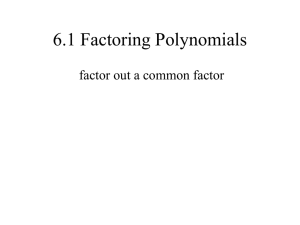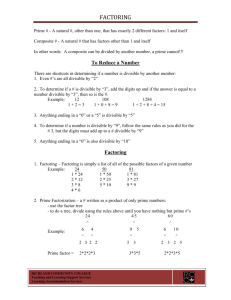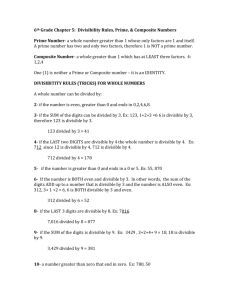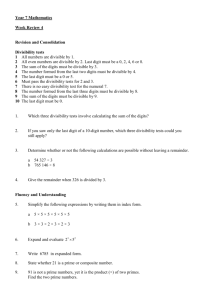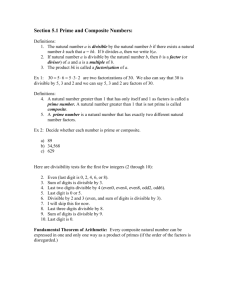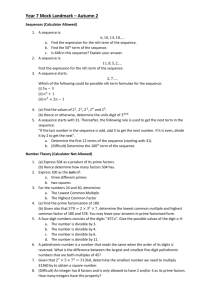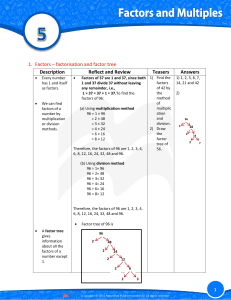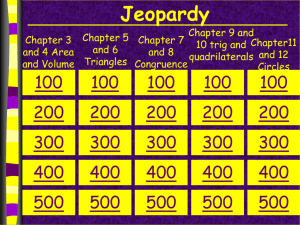Prime, Composite, and Divisibility Rules: Key Points
advertisement
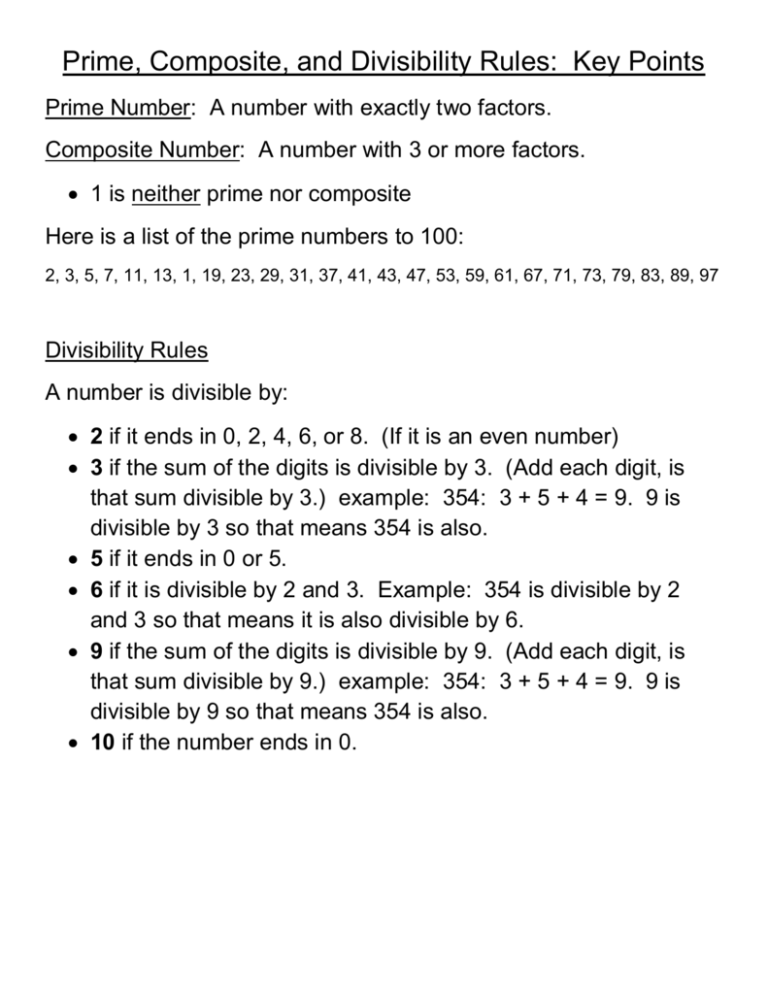
Prime, Composite, and Divisibility Rules: Key Points Prime Number: A number with exactly two factors. Composite Number: A number with 3 or more factors. 1 is neither prime nor composite Here is a list of the prime numbers to 100: 2, 3, 5, 7, 11, 13, 1, 19, 23, 29, 31, 37, 41, 43, 47, 53, 59, 61, 67, 71, 73, 79, 83, 89, 97 Divisibility Rules A number is divisible by: 2 if it ends in 0, 2, 4, 6, or 8. (If it is an even number) 3 if the sum of the digits is divisible by 3. (Add each digit, is that sum divisible by 3.) example: 354: 3 + 5 + 4 = 9. 9 is divisible by 3 so that means 354 is also. 5 if it ends in 0 or 5. 6 if it is divisible by 2 and 3. Example: 354 is divisible by 2 and 3 so that means it is also divisible by 6. 9 if the sum of the digits is divisible by 9. (Add each digit, is that sum divisible by 9.) example: 354: 3 + 5 + 4 = 9. 9 is divisible by 9 so that means 354 is also. 10 if the number ends in 0.


